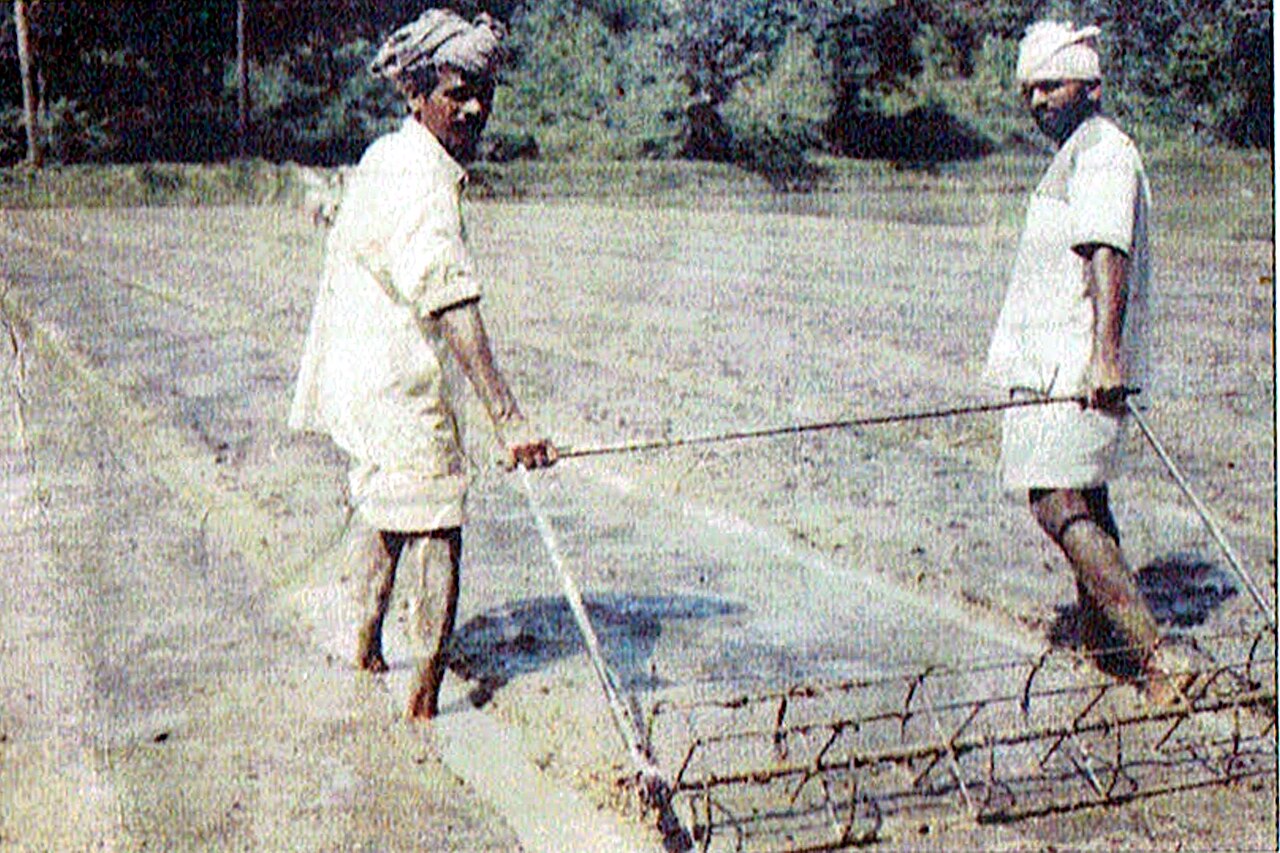An international network of farmers in 50+ countries use open-source agronomy practices via online platforms to improve rice yields by up to five times without pesticides, GMOs or other techniques of industrial agriculture.
# Legal status and Location
SRI is a transnational network of rice farmers, so it does not have a formal legal or organizational status. However, Cornell University (Cornell, NY Americas coordinates SRI and operates its servers. SRI's influence is thus transnational and bioregional as individual farmers participate in the network and applies its innovations in agronomy.
xxxxx

SRI method of paddy cultivation, in India. source ![]() By Nithinhegde.mb.
C BY-SA 4.0; 27 February 2016.
By Nithinhegde.mb.
C BY-SA 4.0; 27 February 2016.
# When did it start?
SRI started in 1998 when researchers at Cornell University shared field experiences and reports about rice-intensification methods on its platform, web ![]() .
.
The project drew upon the agricultural innovations of French Jesuit priest Henri de Laulanié working in the highlands of Madagascar in 1983. Local farmers called the agronomic techniques the System for Rice Intensification and established a local NGO, Association Tefy Saina, to promote SRI and rural development in Madagascar.
The Cornell International Institute for Food, Agriculture and Development began working to improve agriculture in Madagascar in 1994, which four years later led to create a new SRI organization and SRI-Rice, for SRI International Networks and Resources Center.
# How It Works
Through an informal "open source" network of farmers working globally, SRI enables thousands of individual rice farmers to share information about improving rice yields through agronomy practices. On various global, national and regional web platforms, farmers share technical advice, cultivation guidelines, training materials, data monitoring, etc.
SRI principles have improved crop productivity by up to five times, in more than 50 countries, without the use of pesticides, GMOs or other industrial agriculture techniques. About ten million farmers benefit from the SRI methodology, by one conservative estimate.
SRI-Rice collects, organizes, stores and shares SRI knowledge resources from its partners around the world and from daily Internet searches. This information is shared via its website, social media, a newsletter, research databases as well as videos, photos and presentation channels. An SRI-Rice Team also provides technical advice on agronomic techniques and "backstopping" to field programs in several countries.
Financing comes from gifts and grants from various foundations, including Jim Carrey's Better U Foundation, the Ohrstrom Foundation, and West and Central African Council for Agricultural Research and Development.
The project brings together a highly diverse group of rice farmers around a single goal, improving rice crops. Cultivating Shared Purpose and Values Despite the Transnational character of SRI, it is focused on Situated Knowing and being Creatively Adaptive....and needless to say, is entangled with nature in co-creative ways. By bringing individual rice farmers together with a global cohort, it is strengthening the nested-I.
SRI's impact on world-making in a pluriverse is arguably less significant, although I don't know how farmers using SRI may experience new perspectives on the world.
SRI's impact on provisioning is significant because it improves rice yields, which has all sorts of follow-on impacts -- on livelihoods, hunger, community well-being, etc. SRI is all about sharing knowledge -- [pool and share]]. It seeks to produce cosmo-locally and rely on distributed structures. SRI itself is an attempt to establish discrimination-free infrastructures.
The SRI platform is a tool for creating a global community of farmers -- Constituting Tools and infrastructures -- as well as a vehicle for shared knowledge creation.
The SRI team at Cornell plays a key organizing role, but there are dozens of regional and national discussion groups and websites. Most of the categories for governing internal relations appear to be present -- knowledge is not copyrighted but made freely available Relationalize Property; there is a shared mission Develop Shared Purpose & Values; participants consent to decisions Assure Commoner's Consent in Decisionmaking; relevant information is made available to all Honor Transparency in a Sphere of Trust; and of course there is Share Knowledge Often and Widely.
Criteria for internal governance dealing with free-riding or setting limits on usage do not appear to be relevant (because the resource is knowledge).
SRI has little need to beat the bounds because it treats is learning and information as a free, shareable resource. However, emulate and then federate is a core aspect of the project and a reason for its success. It has federated millions of farmers on three continents.
# The Inner Kernel
tag
# Realms of Commoning Food, Knowledge, Land, Learning, Spaces for Commoning
# Sources
System for Rice Intensification website website ![]()
Erika Styger, "The System of Rice Intensification and Its International Community of Practice," in Bollier & Helfrich, Patterns of Commoning (Off the Common Books, 2015). html ![]()
Styger E, Uphoff N. 2016. The System of Rice Intensification (SRI): Revisiting Agronomy for a Changing Climate. Climate-Smart Agriculture Practice Brief. Copenhagen, Denmark: CGIAR Research Program on Climate Change, Agriculture and Food Security (CCAFS). pdf ![]()